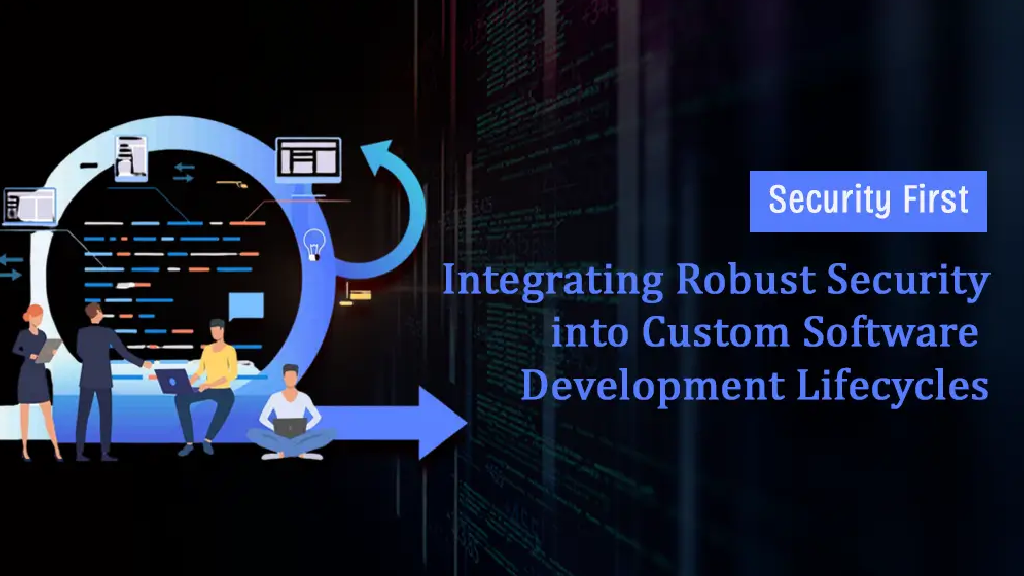Loading content...
- Software DevelopmentIT Consulting & DesignAI & Data SolutionsQuality AssuranceTeam & Resource SupportBusiness Support Services
Supply chain vulnerabilities, dependency alarms, and compliance risks can derail delivery. A secure software development lifecycle (SDLC) ensures speed and compliance go hand in hand. This guide shows what to automate (SBOMs, VEX), where to embed checks (CI/CD, IDEs), which metrics to track, and how to align teams and budgets for faster, safer releases.
Automated artifacts reduce manual reviews and speed up compliance sign-offs.
Continuous scanning + VEX mapping cut MTTR and shrink blast radius.
Minimum Viable Security (MVS) early prevents expensive retrofits later.
Loading content...
Let's discuss your project and create a custom web application that drives your business forward. Get started with a free consultation today.

Does this sound familiar? A fintech app in the works, a normal component upgrade, and a flood of dependency alarms that stop delivery for days.
It's not uncommon for security problems to start in the software supply chain. They mess up delivery schedules, cost a lot of money to fix, and hurt reputations.
When security is an afterthought, programs have to deal with delays, fines, and inefficiencies in their operations.
A secure software development lifecycle (SDLC) is no longer an option. The U.S. Department of Defense's Software Fast Track (SWFT) is an example of how speed, automation, and openness must go hand in hand with strong security safeguards.
This blog is your practical roadmap. We’ll break down:
By the conclusion, you'll have obvious patterns, a sample CI snippet for automating scans, and a list of criteria you can use to decide which security investments to make first.
If you treat security as an extra, you risk slow, expensive remedies and regulatory problems. From SWFT to national cybersecurity laws, procurement models and rules increasingly require traceability, automation, and security measures that can be checked.
The benefits of a secure SDLC for business are:
Ask your teams:
Manual SBOMs and ad-hoc scans create blind spots. Treat security artifacts like build artifacts: generated on every commit, stored, signed, and queryable. This enables real-time risk posture, cleaner audits, and fast, defensible decisions when new CVEs drop.
This pipeline demonstrates how to generate SBOMs, run SCA/SAST, optionally integrate VEX, and enforce security gates. Replace package manager bits to match your stack (Node shown as an example). Assumes Jenkins credentials for SNYK_TOKEN and (optionally)COSIGN_KEY.
1
2
3
4
5
6
7
8
9
10
11
12
13
14
15
16
17
18
19
20
21
22
23
24
25
26
27
28
29
30
31
32
33
34
35
36
37
38
39
40
41
42
43
44
45
46
47
48
49
50
51
52
53
54
55
56
pipeline {
agent { label 'linux' }
parameters {
choice(name: 'SEVERITY_GATE', choices: ['low','medium','high','critical'], description: 'Fail build on >= this severity')
}
environment {
SNYK_TOKEN = credentials('SNYK_TOKEN') // Jenkins Secret Text
SBOM_FILE = 'sbom.cyclonedx.json'
}
stages {
stage('Security Check (SBOM + SCA)') {
steps {
sh '''
set -e
# 1) Install deps if Node project (adjust for your stack)
if [ -f package.json ]; then
npm ci --no-audit --no-fund || npm install
fi
# 2) Generate SBOM (CycloneDX) with Syft
docker run --rm -v "$PWD:/work" -w /work anchore/syft:latest dir:. -o cyclonedx-json >
# 3) Snyk SCA (JSON for archiving) — do not fail yet
docker run --rm -e SNYK_TOKEN= -v "$PWD:/work" -w /work snyk/snyk-cli:stable \
test --json > snyk-report.json || true
# 4) Gate by severity threshold using Node (no jq needed)
node -e '
const fs = require("fs");
const sev = process.env.SEVERITY_GATE || "high";
const rank = {low:1, medium:2, high:3, critical:4};
let j = {};
try { j = JSON.parse(fs.readFileSync("snyk-report.json","utf8")); } catch(e) {}
const vulns = (j.vulnerabilities || []);
const bad = vulns.filter(v => rank[v.severity] >= rank[sev]).length;
console.log(`Violations >= ${sev}: ${bad}`);
process.exit(bad > 0 ? 1 : 0);
'
'''
}
}
}
post {
always {
archiveArtifacts artifacts: 'sbom.cyclonedx.json,snyk-report.json', fingerprint: true
}
failure {
echo 'Security gate failed. See snyk-report.json for details.'
}
}
}(Adapt for your CI/CD system and package manager; keep security checks automated, signed, and enforced progressively.)
To shift security left, developers need to use security principles in their IDEs, pipelines, and review procedures every day. This method makes sure vulnerabilities are found early, when fixing them is quicker, cheaper, and less disruptive.
Tools alone won’t drive adoption — culture and governance make security stick.
A security-first SDLC isn’t about slowing down — it’s about building faster, safer, and smarter. Automating SBOM generation, leveraging VEX for prioritization, and embedding security early drives both compliance and speed.
Well, you could keep researching. Or—we can just talk it through. Book a free chat with Moltech Solutions Inc. We’ll take a look at your project, share what we think, and point you in the right direction. No hard sell. Just real, usable advice.
Let's connect and discuss your project. We're here to help bring your vision to life!